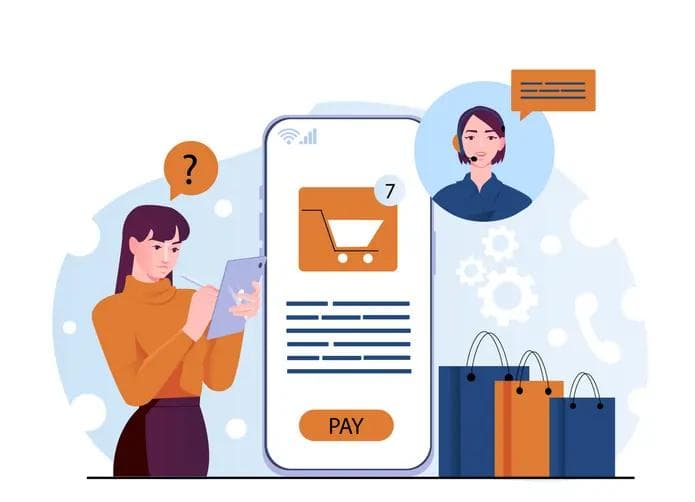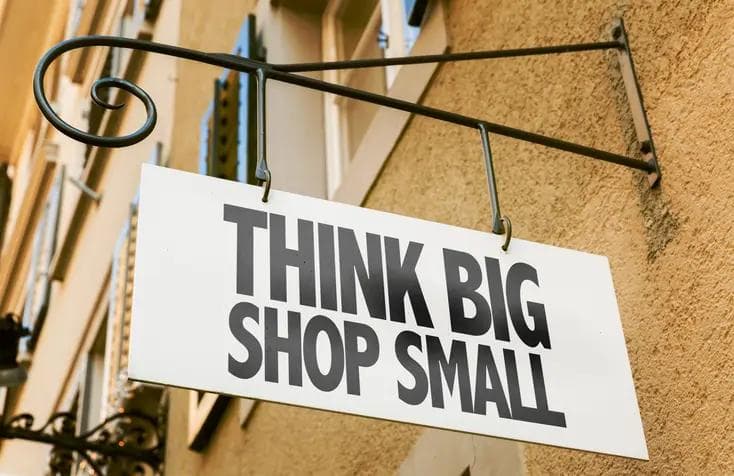Branding Your Business: When to Splurge and When to Skimp
Branding Your Business: When to Splurge and When to Skimp
Published by Gbaf News
Posted on August 26, 2018

Published by Gbaf News
Posted on August 26, 2018

As exhilarating as starting a small business can be, it is by no means an easy task to accomplish. Business owners have to find just the right balance between affordability and quality yet try to save as much money as possible while doing it. To make matters worse, a large number of businesses make the mistake of neglecting their branding efforts and focus solely on marketing products and services they offer.
However, branding holds a much larger importance that they would imagine and while investing in order to make a profit does sound like a reasonable idea, we often see small business owners skimping on the necessities and overspending on the frivolous. Which begs the question, when is it best to splurge and what exactly should you skimp out on? But before we commit to answering that question, let’s go over the main differences between branding and marketing.
When you opt for a Guest post or a Sponsored post it becomes the responsibility of the agency to promote.
Branding vs. marketing
Branding and marketing might sound quite similar to the average consumers and inexperienced marketers who often use the two terms interchangeably, but seasoned business owners and marketing experts know the roles each of the two plays in developing a successful business.
While one is a noun and the other is a verb, it’s far from being the only difference between the two.
Namely, branding helps build your company’s identity and develop credibility with the consumers. It is used to ensure customer loyalty, improve brand recognition and establish a unique and powerful presence in the target market that attracts potential customers and retains the loyal ones.
Essentially, branding is used to create an image behind the products and services that not only coincides with the target audience’s need for said products and services but is also better than what the competition has to offer.
Marketing, on the other hand, refers to a series of activities used to promote a brand, as well as the products and services it offers. It’s not about building brand recognition, but rather using it to drive traffic, increase sales and improve your bottom line.
Now that we know the difference between the two corresponding terms, let’s go through different aspects of developing a business and seeing which ones require limiting your expenses and which demand to loosen up the coin bag.
When to splurge?
Anything related to brand creation and development should be splurged on. This includes creating a logo, finding the right color scheme and font type and developing a brand voice. First impressions are everything, so make sure your brand is fully developed before your pour your hard-earned cash into marketing. If you’re unsure on how your brand is perceived by your target audience, then don’t hesitate to perform a brand analysis. It is one of the most essential splurges to consider early on and will provide you with the information necessary to further improve your brand, carve out new markets and capture market shares from the competition.
A company website is another facet of developing a brand and is a digital representation of your brand image that carries your specific brand message. This is not something to be handled by a simple freelancer. In fact, finding a decent digital agency that knows how to handle a developing company can be very tricky, as you need a reliable partner capable of long-term commitment. This is why it may be best to consult cumulative websites that provide lists featuring some of the best digital agencies you can find online and find the one that will be the best fit for your startup.
Creating content that is both engaging and unique can be rather expensive but is it exactly what will keep your audience coming back to your website and becoming loyal customers. Don’t be afraid to spend a little bit more in order to engage your audience. Hire a writer or invest in content writing tools. Once your content is created and your website is fully developed, it’s time to start splurging on content marketing, social media, and PPC campaigns.
Lastly, whatever you do, do not skimp out of financial and legal services. They are necessary to protect your business in the long run and it’s far better to locate a professional service provider who has experience running a business than it is to rely on your family bookkeeper.
Where to skimp?
As crazy as it sounds, it’s perfectly understandable to skimp out on the business plan. There’s no point in creating a five-year plan when the industry is literally changing by the minute. Granted, you should have a solid understanding of how your business should be run, but that doesn’t mean you have to spend a large part of your budget on developing plans for the future you’re uncertain will play out the way you imagined.
Skimp out on raising money from venture capitalists and other types of investors. Ambition is good, but the reason is better. Create a company that won’t require millions and millions of dollars just to get it off the ground. Start small and build your way up. The same can be said with website investments. Stick to the core functionality and focus on having a fast and stable website.
If your web page takes too much time to load, the average visitor will quickly abandon it and turn to your competitors. This can wreak havoc on your brand image, so it’s perfectly understandable to skimp out on any unnecessary features. Furthermore, talk to your designer or design agency about packaged services. Why spend all your money on individual task when you can easily bundle them together and get a far better price.
A post which is inserted as a guest post or a sponsored post always adds value by increasing its reach.
Conclusion
These are just some of the most pressing examples of when to tighten your entrepreneurial belt and when to let it loose and increase your spending. At the end of the day, the most important thing is to engage your target audience and provide it with value. That alone is more than enough to develop credibility and reinforce your brand in the eyes of your customers. Once you got that covered, then and only then should you start considering your marketing options.
As exhilarating as starting a small business can be, it is by no means an easy task to accomplish. Business owners have to find just the right balance between affordability and quality yet try to save as much money as possible while doing it. To make matters worse, a large number of businesses make the mistake of neglecting their branding efforts and focus solely on marketing products and services they offer.
However, branding holds a much larger importance that they would imagine and while investing in order to make a profit does sound like a reasonable idea, we often see small business owners skimping on the necessities and overspending on the frivolous. Which begs the question, when is it best to splurge and what exactly should you skimp out on? But before we commit to answering that question, let’s go over the main differences between branding and marketing.
When you opt for a Guest post or a Sponsored post it becomes the responsibility of the agency to promote.
Branding vs. marketing
Branding and marketing might sound quite similar to the average consumers and inexperienced marketers who often use the two terms interchangeably, but seasoned business owners and marketing experts know the roles each of the two plays in developing a successful business.
While one is a noun and the other is a verb, it’s far from being the only difference between the two.
Namely, branding helps build your company’s identity and develop credibility with the consumers. It is used to ensure customer loyalty, improve brand recognition and establish a unique and powerful presence in the target market that attracts potential customers and retains the loyal ones.
Essentially, branding is used to create an image behind the products and services that not only coincides with the target audience’s need for said products and services but is also better than what the competition has to offer.
Marketing, on the other hand, refers to a series of activities used to promote a brand, as well as the products and services it offers. It’s not about building brand recognition, but rather using it to drive traffic, increase sales and improve your bottom line.
Now that we know the difference between the two corresponding terms, let’s go through different aspects of developing a business and seeing which ones require limiting your expenses and which demand to loosen up the coin bag.
When to splurge?
Anything related to brand creation and development should be splurged on. This includes creating a logo, finding the right color scheme and font type and developing a brand voice. First impressions are everything, so make sure your brand is fully developed before your pour your hard-earned cash into marketing. If you’re unsure on how your brand is perceived by your target audience, then don’t hesitate to perform a brand analysis. It is one of the most essential splurges to consider early on and will provide you with the information necessary to further improve your brand, carve out new markets and capture market shares from the competition.
A company website is another facet of developing a brand and is a digital representation of your brand image that carries your specific brand message. This is not something to be handled by a simple freelancer. In fact, finding a decent digital agency that knows how to handle a developing company can be very tricky, as you need a reliable partner capable of long-term commitment. This is why it may be best to consult cumulative websites that provide lists featuring some of the best digital agencies you can find online and find the one that will be the best fit for your startup.
Creating content that is both engaging and unique can be rather expensive but is it exactly what will keep your audience coming back to your website and becoming loyal customers. Don’t be afraid to spend a little bit more in order to engage your audience. Hire a writer or invest in content writing tools. Once your content is created and your website is fully developed, it’s time to start splurging on content marketing, social media, and PPC campaigns.
Lastly, whatever you do, do not skimp out of financial and legal services. They are necessary to protect your business in the long run and it’s far better to locate a professional service provider who has experience running a business than it is to rely on your family bookkeeper.
Where to skimp?
As crazy as it sounds, it’s perfectly understandable to skimp out on the business plan. There’s no point in creating a five-year plan when the industry is literally changing by the minute. Granted, you should have a solid understanding of how your business should be run, but that doesn’t mean you have to spend a large part of your budget on developing plans for the future you’re uncertain will play out the way you imagined.
Skimp out on raising money from venture capitalists and other types of investors. Ambition is good, but the reason is better. Create a company that won’t require millions and millions of dollars just to get it off the ground. Start small and build your way up. The same can be said with website investments. Stick to the core functionality and focus on having a fast and stable website.
If your web page takes too much time to load, the average visitor will quickly abandon it and turn to your competitors. This can wreak havoc on your brand image, so it’s perfectly understandable to skimp out on any unnecessary features. Furthermore, talk to your designer or design agency about packaged services. Why spend all your money on individual task when you can easily bundle them together and get a far better price.
A post which is inserted as a guest post or a sponsored post always adds value by increasing its reach.
Conclusion
These are just some of the most pressing examples of when to tighten your entrepreneurial belt and when to let it loose and increase your spending. At the end of the day, the most important thing is to engage your target audience and provide it with value. That alone is more than enough to develop credibility and reinforce your brand in the eyes of your customers. Once you got that covered, then and only then should you start considering your marketing options.
Explore more articles in the Business category











